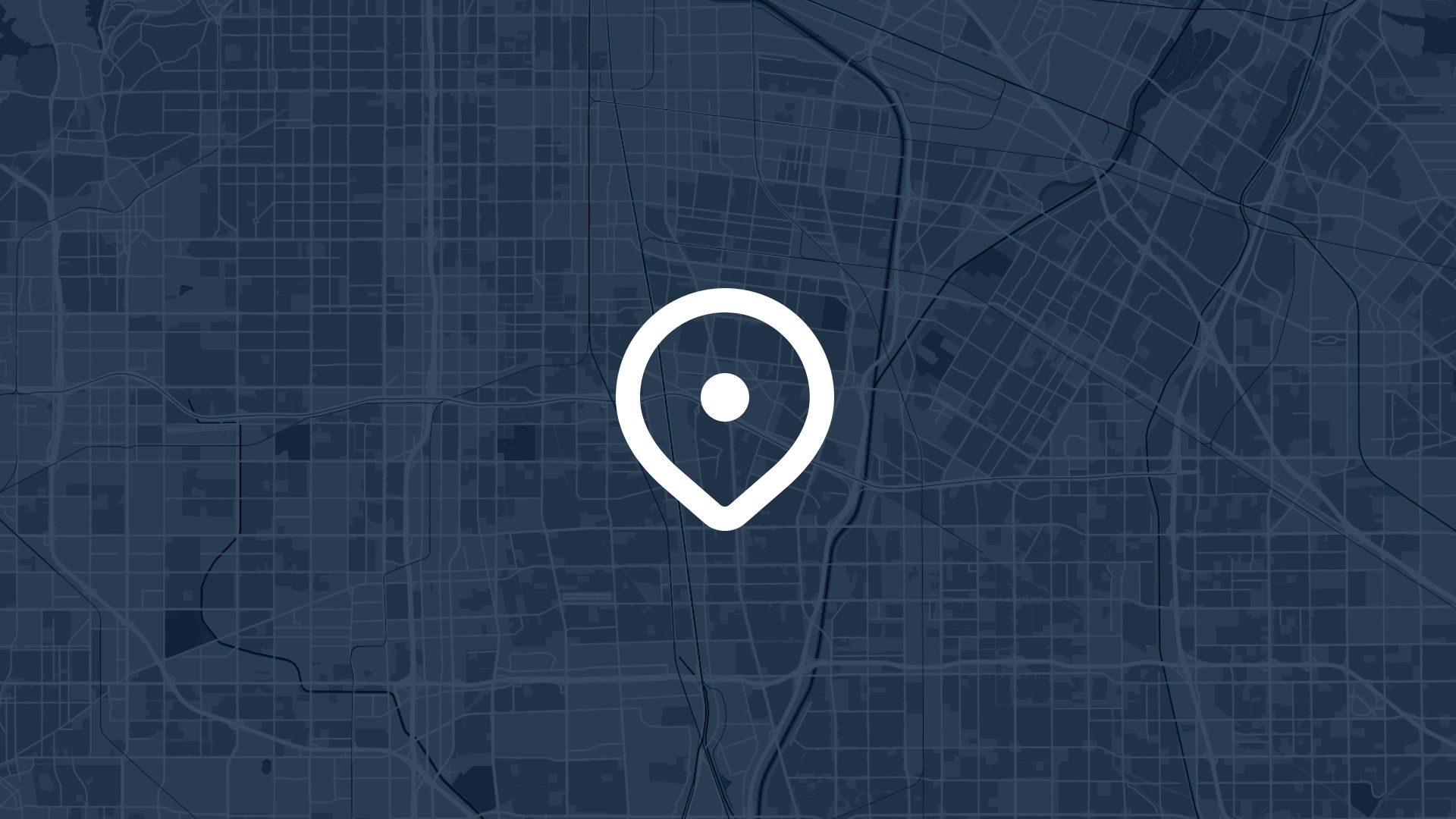The most effective retail site selection combines comprehensive parcel analysis with traffic count data to reveal exactly which properties offer optimal exposure potential, minimize customer acquisition costs, and maximize retail visibility across high-traffic locations.
If your retail site selection relies only on general parcel information, basic traffic estimates, or location data that lacks detailed traffic analysis and property assessment, you're missing the visibility intelligence that determines customer exposure, foot traffic potential, and retail success. That's why experienced retail developers ask: can we overlay parcel and traffic count data to find top locations with optimal traffic exposure, evaluate property potential, and select strategic sites for retail projects based on comprehensive traffic analysis and parcel intelligence?
With Atlas, you can create comprehensive traffic and parcel analysis that combines property characteristics with traffic exposure evaluation and retail intelligence for actionable site selection decisions. No complex traffic modeling software, no uncertainty about customer exposure, no barriers to understanding high-traffic retail opportunities. Everything starts with clear geographic visualization and meaningful traffic-parcel integration.
Here's how to set it up step by step.
Why Overlaying Parcel and Traffic Count Data Matters for Retail Location Selection
Creating comprehensive traffic exposure and parcel analysis enables better site selection and more effective retail development across high-visibility locations.
So overlaying parcel and traffic count data isn't just convenient location visualization—it's essential retail intelligence that transforms traffic data into strategic site selection insights for successful commercial development.
Step 1: Set Up Comprehensive Traffic Data and Parcel Intelligence Integration
Atlas makes it easy to create detailed traffic-parcel analysis with comprehensive exposure and property evaluation:
- Upload traffic count data including vehicle volumes, pedestrian counts, traffic patterns, and exposure metrics organized by road segments and intersection locations for retail site analysis
- Add parcel information showing property boundaries, development potential, zoning designations, and site characteristics that affect retail development and traffic visibility
- Import road network data connecting traffic flow directions, speed limits, access points, and roadway characteristics that affect customer visibility and retail exposure
- Include commercial context showing existing retail presence, signage opportunities, and visibility factors that affect traffic-based retail performance and customer attraction
Once configured, your traffic-parcel analysis provides the geographic foundation for comprehensive exposure-based site selection and retail development planning.
Step 2: Create Traffic-Parcel Overlay and Top Location Visualization
Next, build retail location visualization that reveals traffic exposure and property potential across different sites:
You can display different traffic-parcel analysis approaches:
- Traffic density mapping showing vehicle and pedestrian counts overlaid with available parcels, revealing high-exposure retail development opportunities
- Exposure scoring analysis displaying how parcel characteristics combine with traffic volumes to create optimal visibility and customer exposure for retail success
- Access pattern evaluation revealing how traffic flow directions, turning movements, and roadway access affect parcel visibility and customer convenience
- Combined traffic-parcel ranking integrating traffic exposure with property suitability to identify locations with optimal combinations of visibility and development potential
- Peak traffic analysis showing traffic count variations, rush hour patterns, and exposure timing that affect retail customer attraction and sales potential
- Visibility corridor identification mapping high-traffic road segments with available parcels that offer optimal retail exposure and development opportunities
Each visualization approach reveals location characteristics that inform retail development decisions, traffic-based positioning, and exposure optimization strategies.
Step 3: Analyze Traffic Patterns and Top Location Identification
To extract retail insights from traffic-parcel overlay and exposure analysis:
- Identify top traffic-exposed parcels discovering properties with optimal traffic counts, visibility characteristics, and development potential that support retail success and customer attraction
- Evaluate exposure efficiency understanding how traffic patterns, road configurations, and parcel positioning maximize customer visibility while optimizing development costs
- Assess retail positioning potential analyzing how traffic exposure and property characteristics enable optimal retail concepts, customer targeting, and market positioning
- Compare location scenarios evaluating trade-offs between traffic exposure, property costs, and development requirements to optimize retail site selection and investment return
- Discover visibility opportunities using traffic-parcel analysis to identify locations where high exposure combines with favorable property characteristics for maximum retail potential
Traffic-parcel overlay analysis reveals location optimization strategies and exposure intelligence that maximize retail project success and customer visibility.
Step 4. Enable Retail Development Team Coordination and Traffic Assessment
To support commercial development and traffic-based planning:
- Create traffic exposure dashboards providing development teams with comprehensive traffic analysis, parcel evaluation, and top location intelligence
- Set up site evaluation tools helping retail teams understand traffic patterns, assess property potential, and coordinate development strategies based on exposure analysis
- Add stakeholder communication enabling clear presentation of traffic exposure, parcel advantages, and top location rankings to investors and development partners
- Include visibility planning providing traffic analysis for signage design, store positioning, and customer attraction strategies that leverage high-traffic exposure
- Configure portfolio management using traffic-parcel data to support retail portfolio development, exposure coordination, and strategic location selection across multiple high-traffic sites
Traffic exposure intelligence becomes actionable across development teams, enabling coordinated visibility planning and informed retail location selection decisions.
Step 5: Optimize Retail Strategy and Traffic-Based Market Positioning
To use traffic-parcel analysis for strategic retail development:
- Plan high-visibility store networks using traffic exposure analysis to identify top locations with optimal customer exposure and coordinate regional retail expansion strategies
- Optimize customer attraction understanding traffic patterns and exposure opportunities to maximize brand visibility and minimize customer acquisition costs
- Coordinate visibility marketing using traffic analysis to plan advertising, signage, and promotional strategies that leverage high-traffic location advantages
- Design customer experience strategies analyzing traffic flow and parcel access to plan store layouts, parking, and customer convenience that capitalize on traffic exposure
- Plan market penetration understanding traffic patterns and exposure timing to design retail strategies that capture maximum customer attention and market share
Step 6: Integrate Traffic-Parcel Analysis with Retail Development Systems
Now that comprehensive traffic-parcel overlay and top location analysis are complete:
- Export traffic intelligence for integration with retail planning platforms, site selection systems, and project management tools
- Create visibility support using traffic and parcel analysis to inform store design, signage planning, and customer attraction strategies for high-exposure locations
- Set up market coordination providing traffic analysis for lease negotiations, visibility assessments, and retail partnership development
- Design portfolio management using traffic-parcel analysis to support retail portfolio development, exposure planning, and strategic location selection across multiple high-traffic properties
- Generate investment intelligence supporting retail consulting, location analysis, and investment decisions with comprehensive traffic exposure and parcel evaluation
Your traffic-parcel analysis becomes part of comprehensive retail development that creates better project outcomes through exposure intelligence and strategic high-visibility site selection.
Use Cases
Overlaying parcel and traffic count data to find top locations is useful for:
- Retail site selectors identifying optimal high-traffic locations and evaluating exposure potential based on comprehensive traffic analysis and parcel assessment
- Commercial developers evaluating retail development opportunities and planning projects based on traffic exposure, property characteristics, and visibility advantages
- Investment analysts assessing retail real estate project potential and making investment decisions based on traffic exposure, location quality, and revenue forecasting
- Chain store planners evaluating retail expansion opportunities and planning store networks based on traffic optimization, exposure coordination, and top location identification
- Retail consultants supporting clients with location selection and feasibility analysis based on traffic-parcel analysis, exposure assessment, and optimal site identification
It's essential for any retail development where project success depends on understanding customer exposure and making traffic-informed decisions about store location selection and visibility positioning.
Tips
- Consider traffic quality analyzing not just traffic volume but also customer demographics, shopping patterns, and spending potential of traffic passing high-exposure parcels
- Evaluate access convenience understanding how traffic flow directions, turning restrictions, and parking availability affect customer convenience and retail accessibility
- Include visibility factors analyzing sight lines, signage opportunities, and visual exposure that affect brand recognition and customer attraction from traffic flow
- Plan for traffic variations understanding peak traffic times, seasonal patterns, and traffic changes that affect long-term retail exposure and customer attraction potential
- Combine with market factors analyzing how traffic exposure relates to target customers, retail concepts, and market positioning for optimal location selection
Overlaying parcel and traffic count data to find top locations in Atlas enables comprehensive exposure assessment and evidence-based retail development decisions.
No separate traffic analysis software needed. Just analyze traffic patterns and property characteristics geographically, evaluate exposure opportunities, and discover the retail intelligence that optimizes high-visibility location selection and customer attraction.
Site Search and Evaluation with Atlas
Finding the right location isn't just about availability—it's about discovering sites that meet your specific requirements and offer the best potential for project success.
Atlas helps you turn location criteria into actionable site intelligence: one platform for site analysis, evaluation, and strategic selection.
Transform Location Requirements into Site Intelligence
You can:
- Analyze terrain conditions, environmental factors, and infrastructure access that affect site suitability
- Evaluate multiple sites simultaneously and compare them based on your specific project requirements
- Identify optimal locations by combining geographic analysis with project-specific criteria and constraints
Also read: Track Equipment and Assets by Location
Build Site Selection That Drives Project Success
Atlas lets you:
- Score and rank potential sites based on multiple criteria and project requirements
- Generate comprehensive site reports that support decision-making and stakeholder communication
- Export site intelligence for integration with project development and investment analysis systems
That means no more guessing about site suitability, and no more uncertainty about which locations offer the best potential for your projects.
Discover Better Sites Through Geographic Intelligence
Whether you're developing retail projects, planning commercial facilities, or selecting business locations, Atlas helps you turn site requirements into competitive advantage.
It's site evaluation—designed for geographic precision and project success.
Find Your Ideal Location with the Right Tools
Site selection is complex, but location intelligence can be simple. Whether you're evaluating traffic exposure, analyzing property potential, assessing visibility opportunities, or planning high-traffic development—location matters.
Atlas gives you both precision and insight.
In this article, we covered how to overlay parcel and traffic count data to find top locations, but that's just one of many ways Atlas helps you evaluate sites.
From traffic analysis to exposure assessment, visibility evaluation, and location planning, Atlas makes site search and evaluation accessible and actionable. All from your browser. No traffic expertise needed.
So whether you're developing retail projects or selecting any type of visibility-dependent business location, Atlas helps you move from "searching for sites" to "selecting optimal locations" faster.
Sign up for free or book a walkthrough today.




